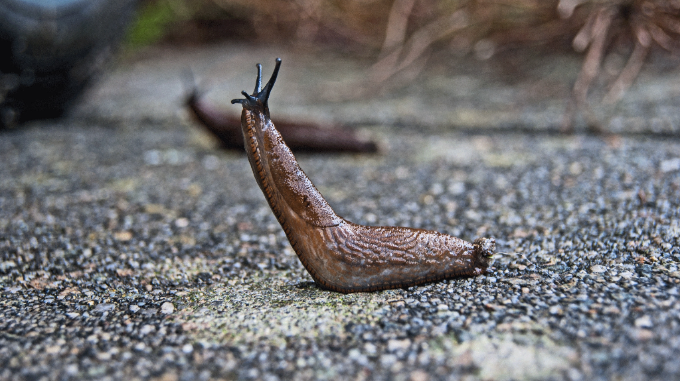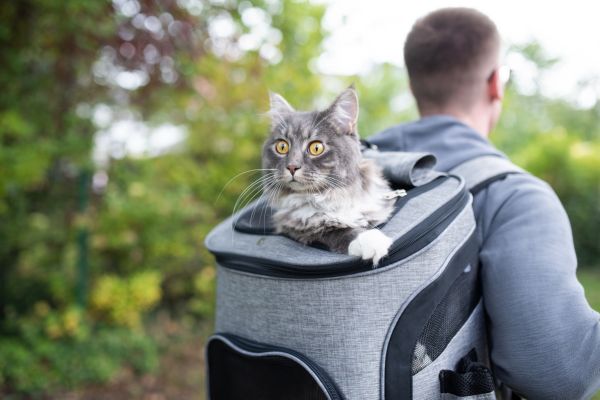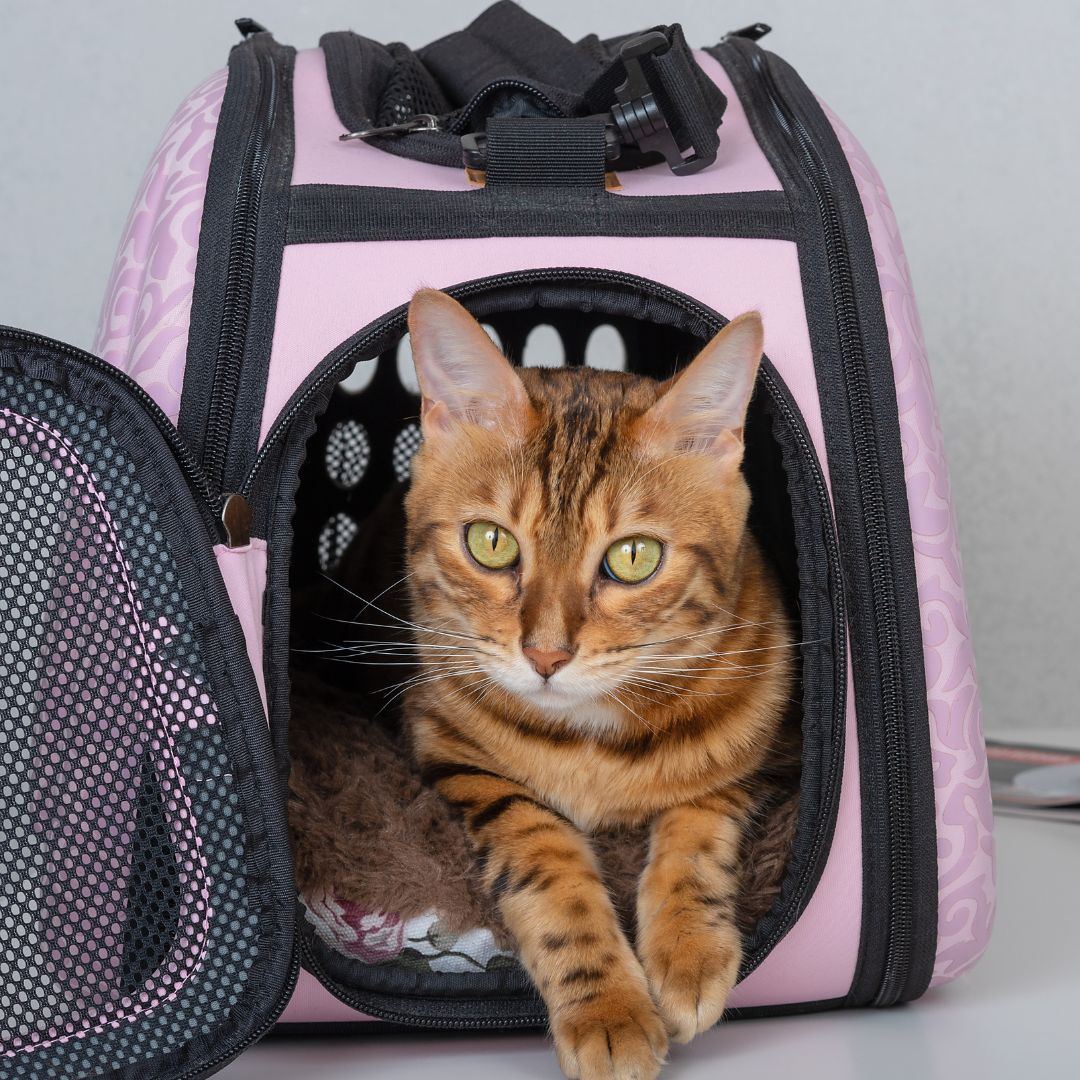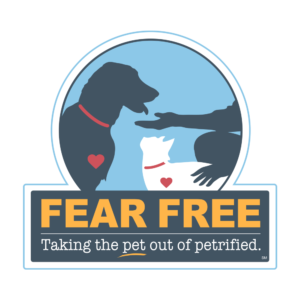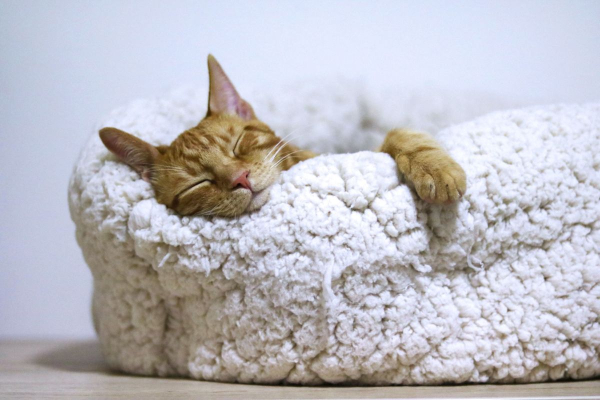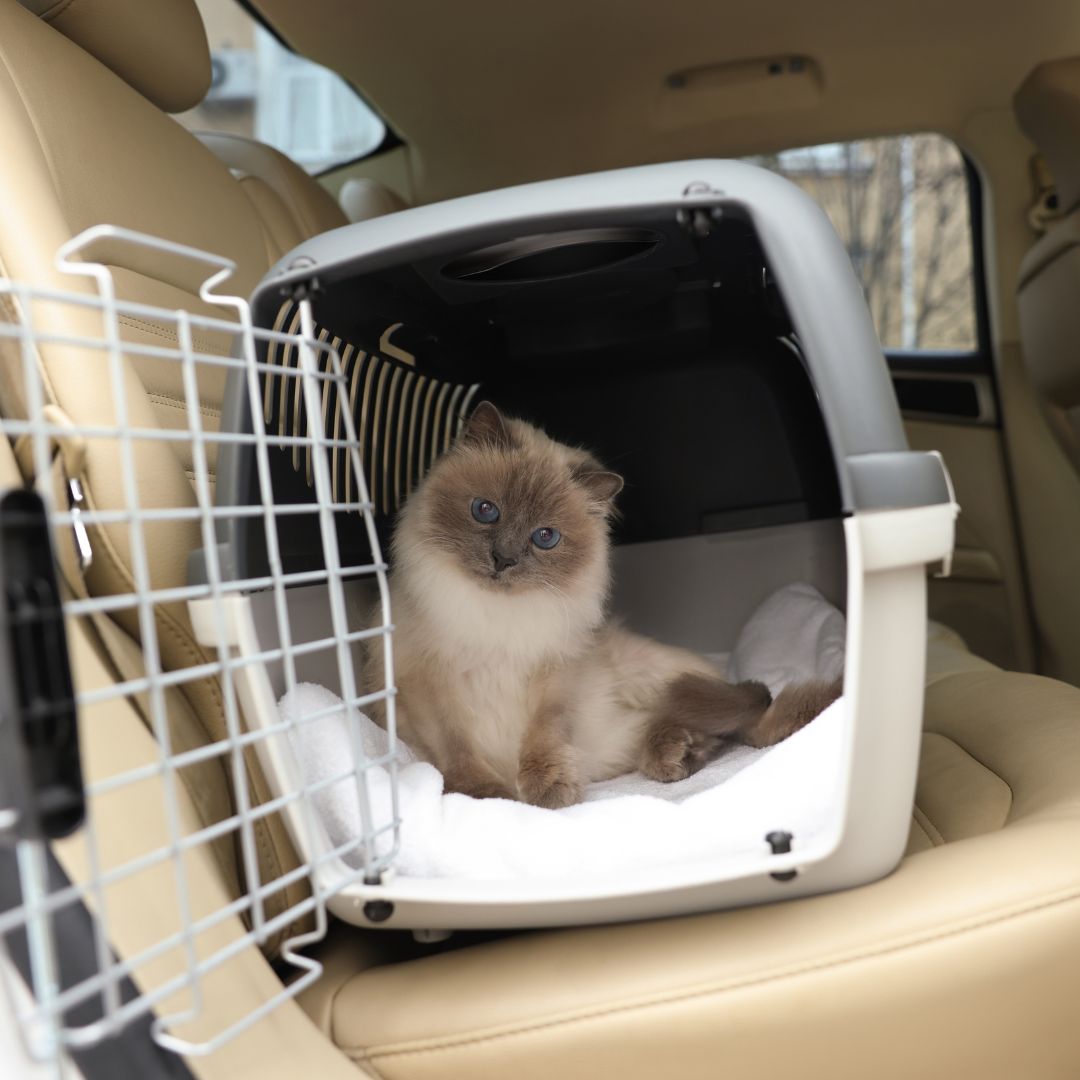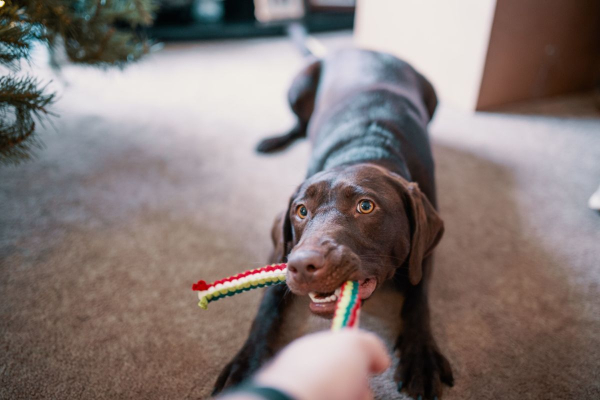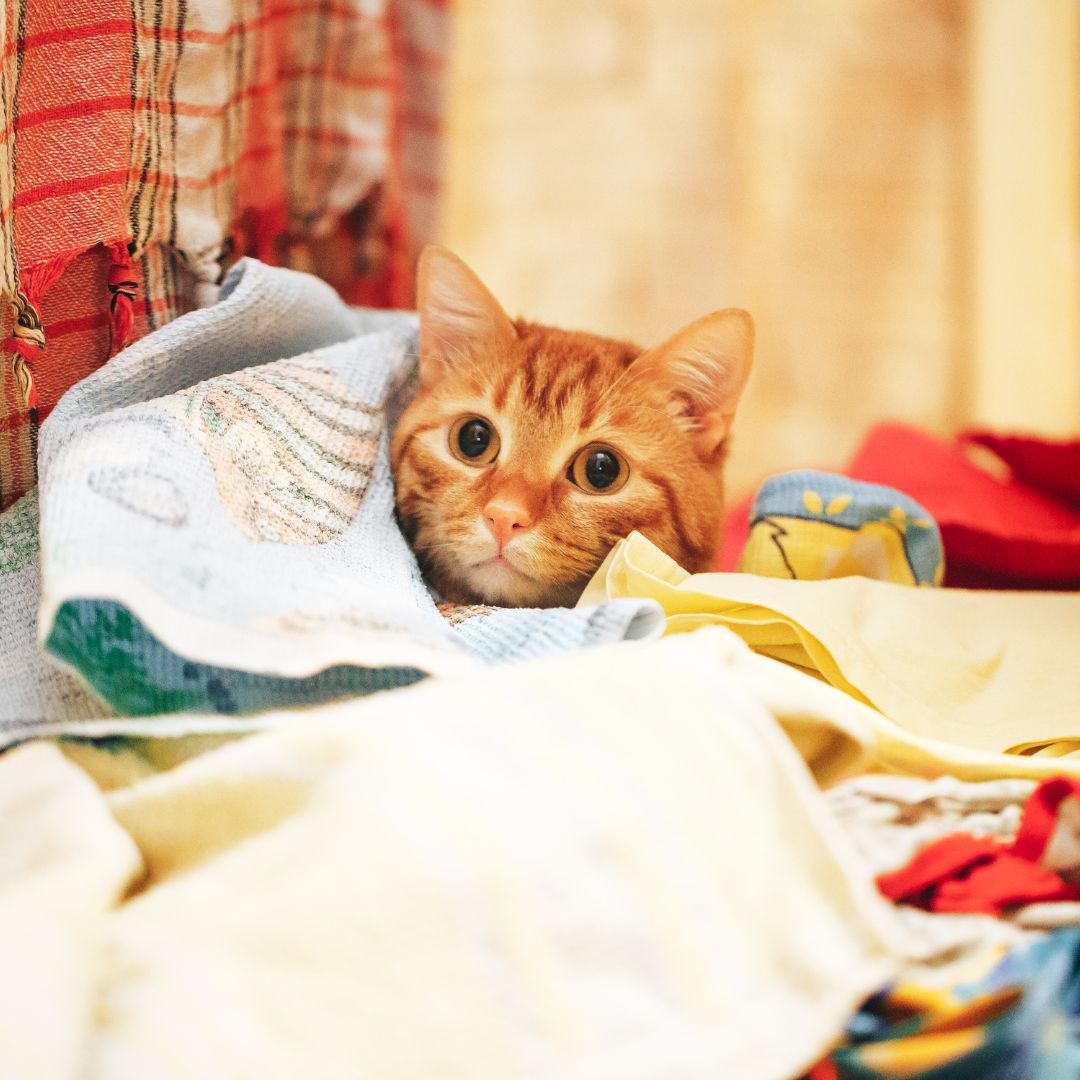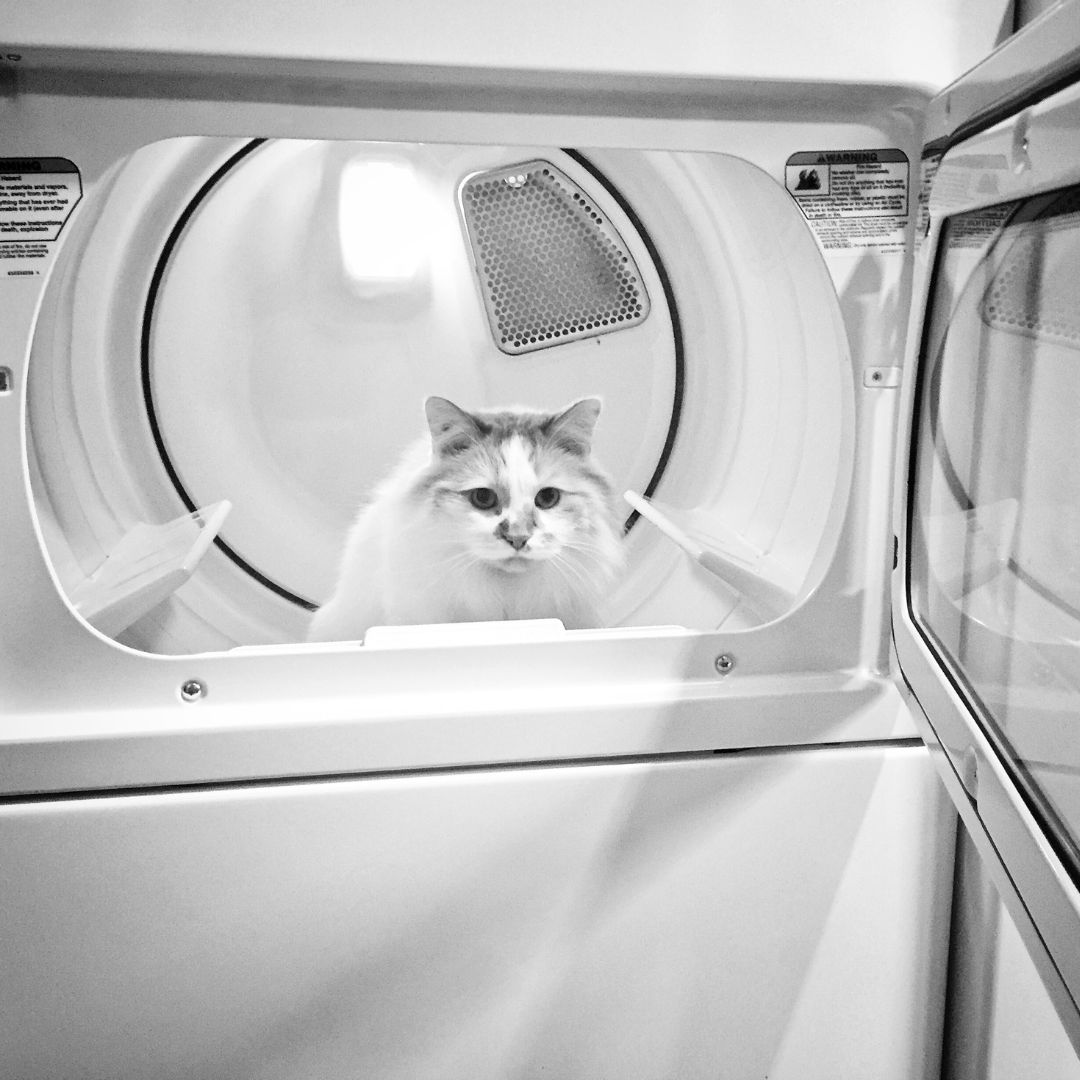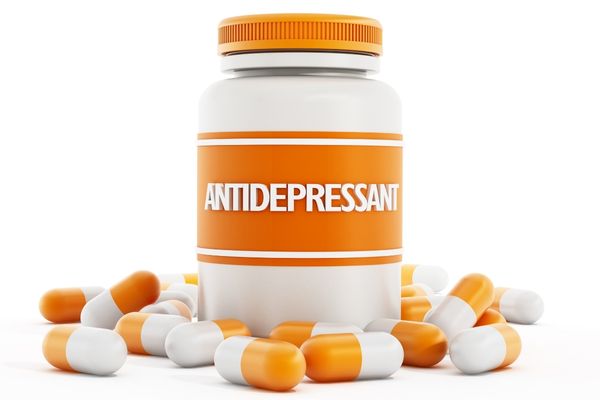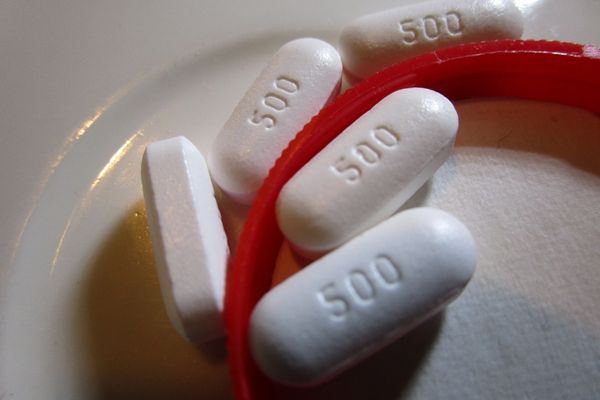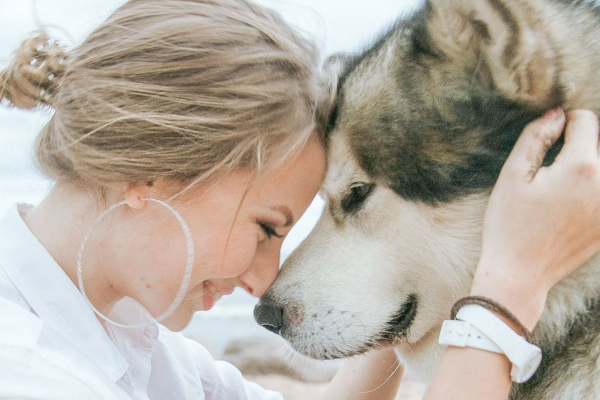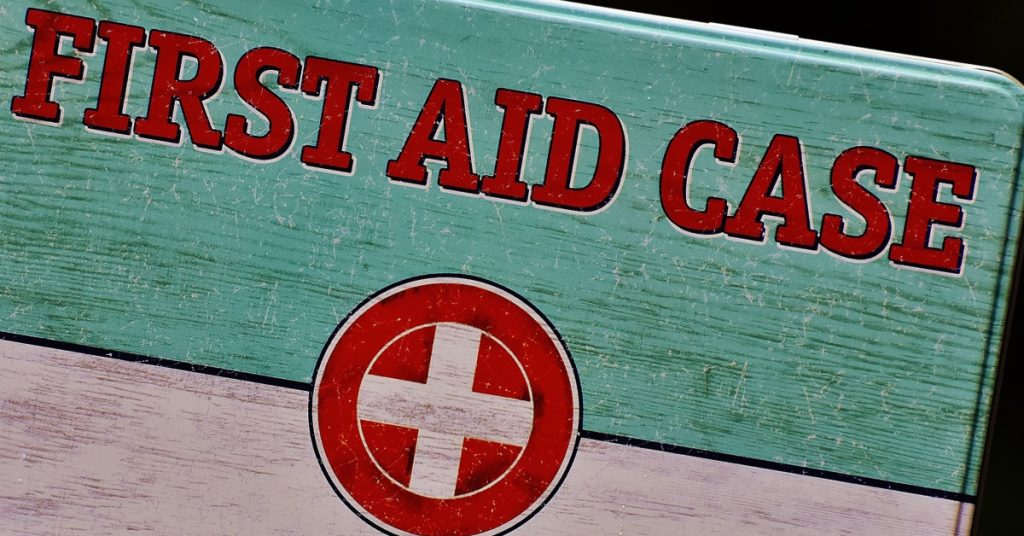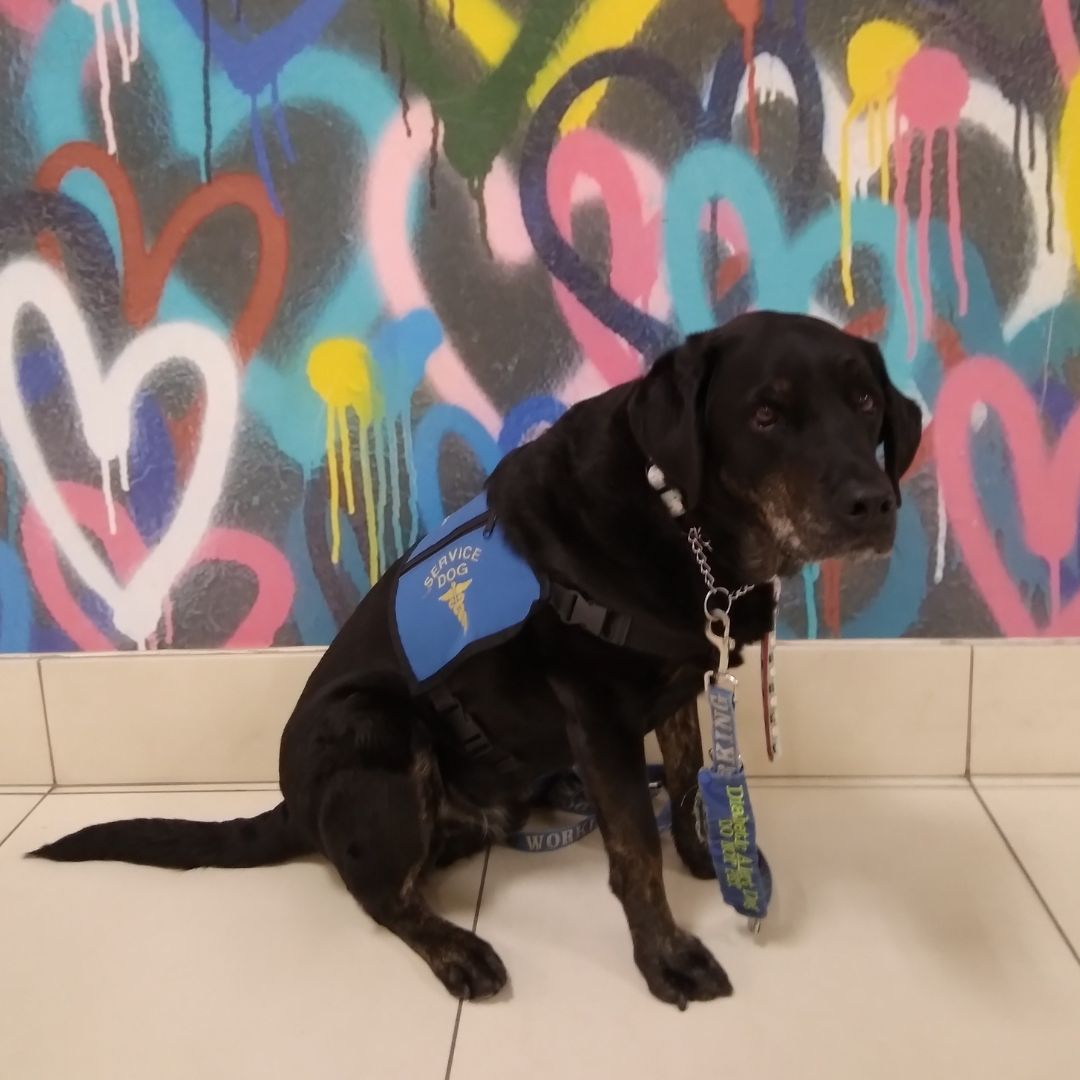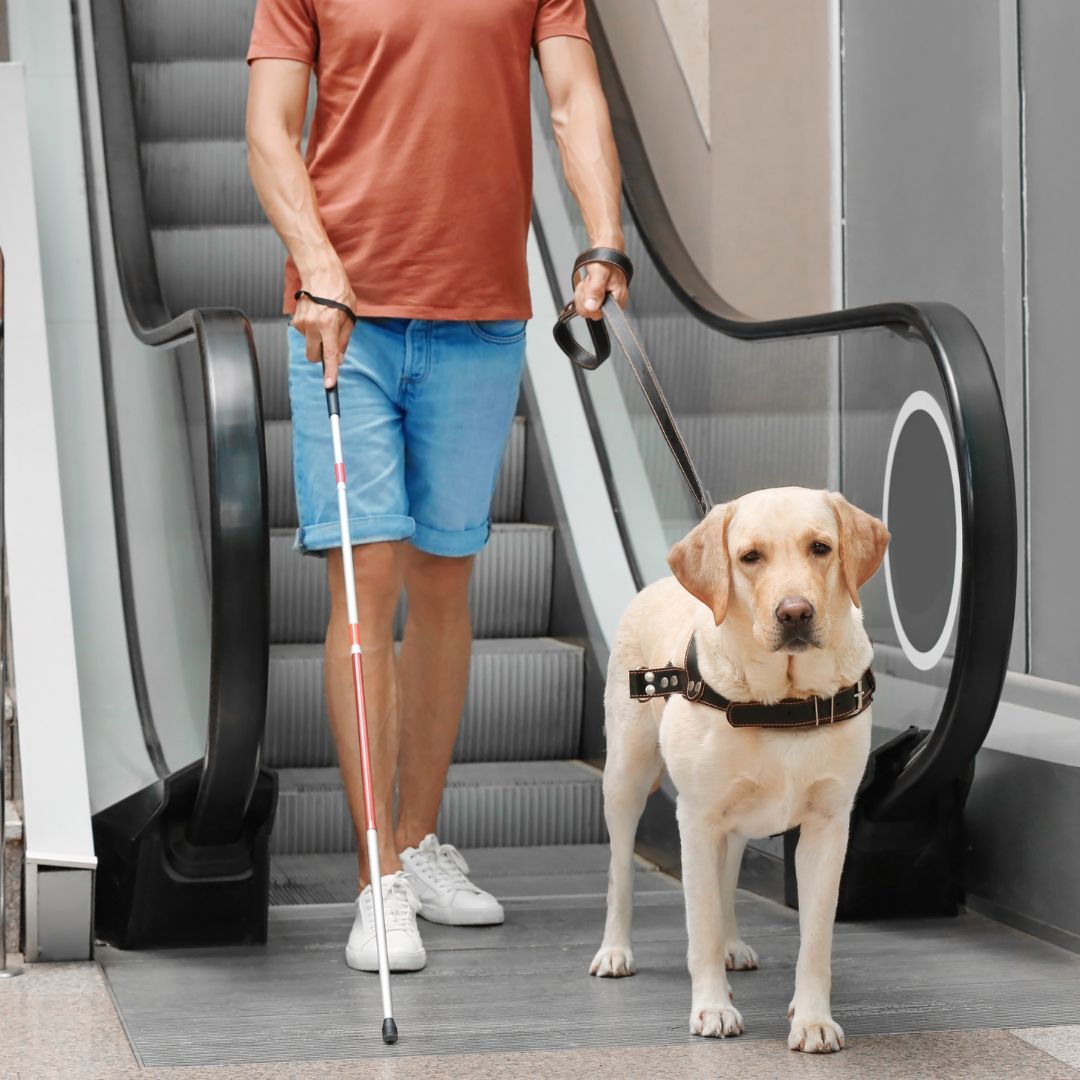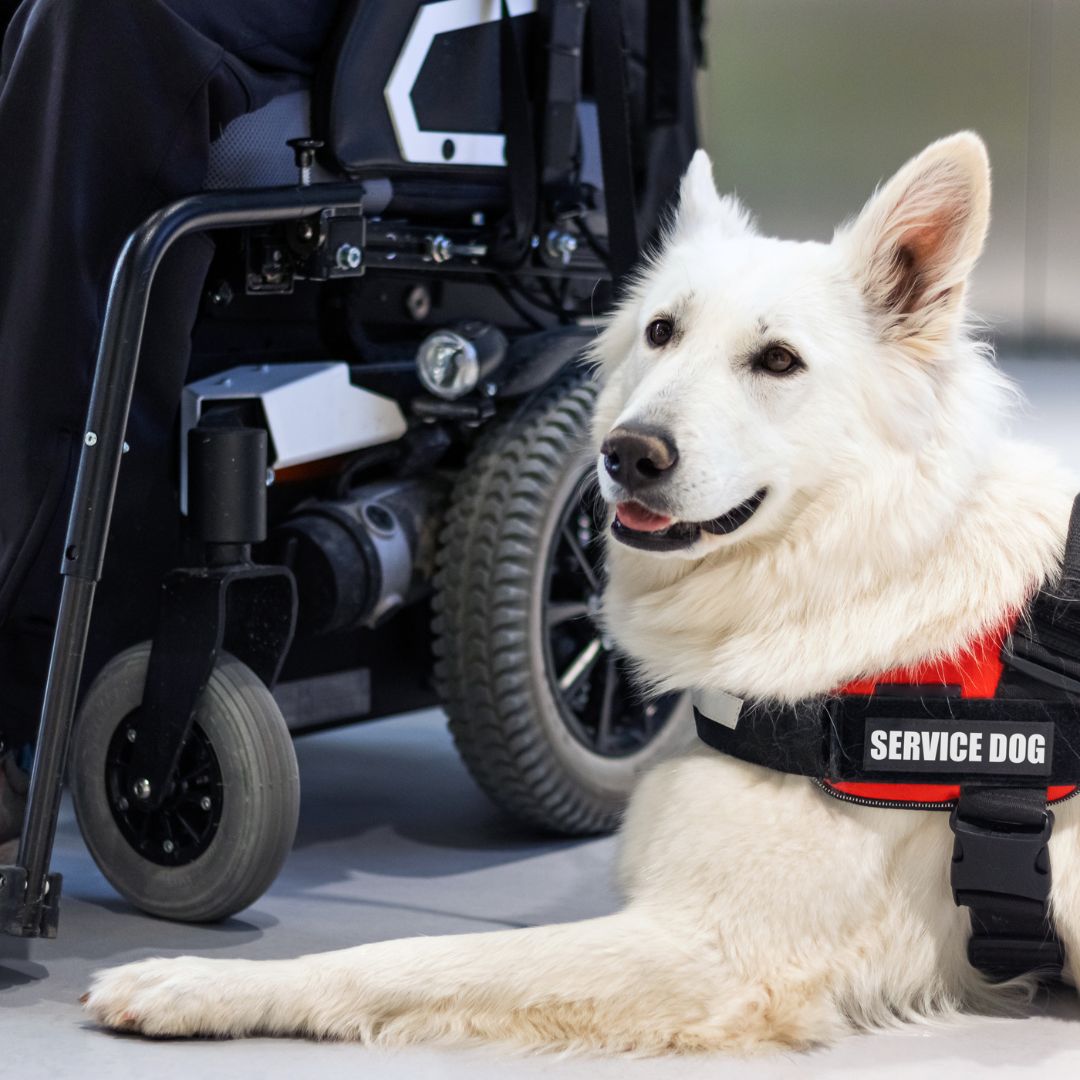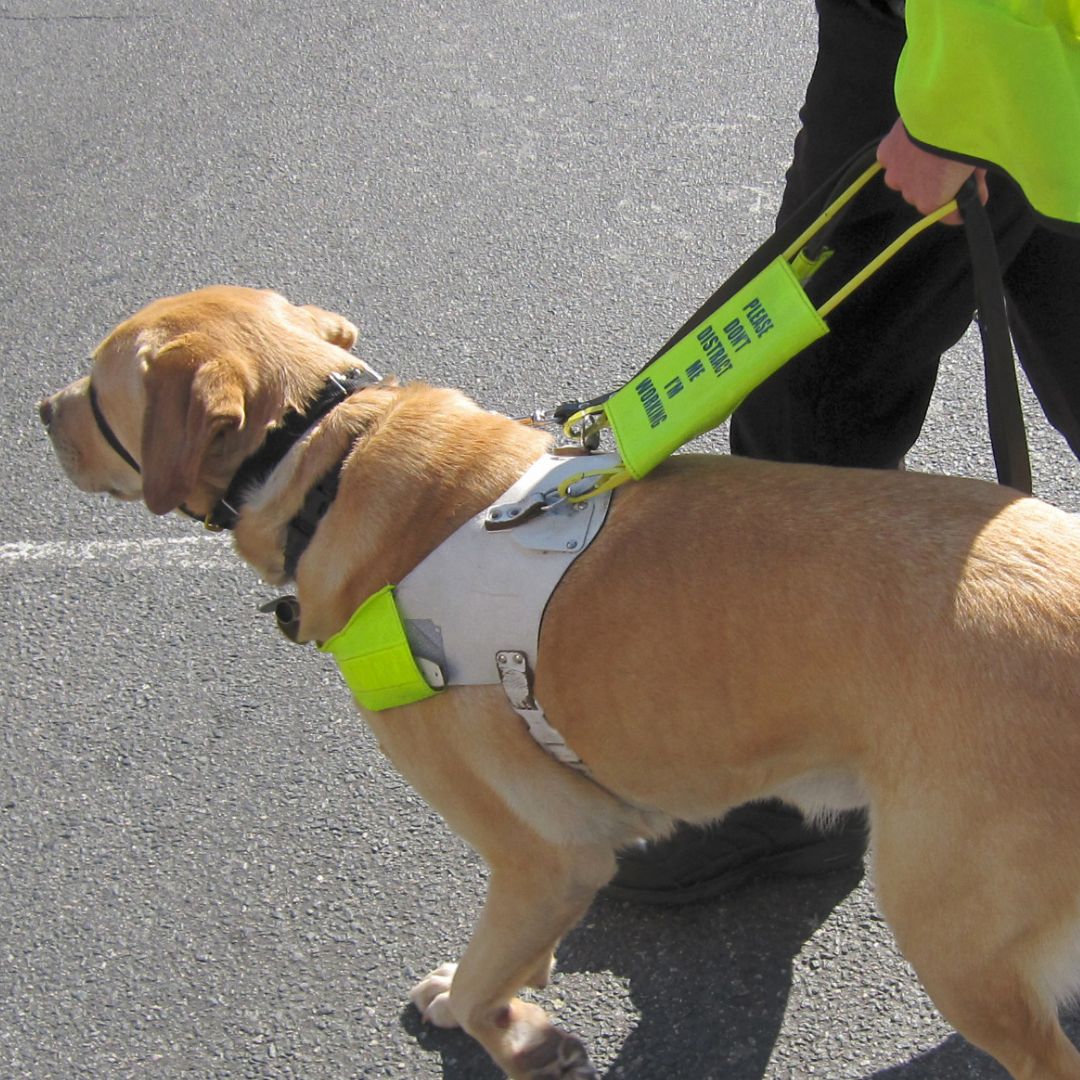The cranial cruciate ligament, or CCL (called the anterior cruciate ligament or ACL in humans) is a very important ligament in the stifle (knee) joint in pets.
This tiny ligament’s job, along with the caudal cruciate ligament and collateral ligaments, is to stabilize the stifle joint where the femur (thigh) and tibia (shin) bones meet. Because cats and dogs stand on 4 limbs, the angle of their stifle joints put constant stress on the CCL, even while only standing.
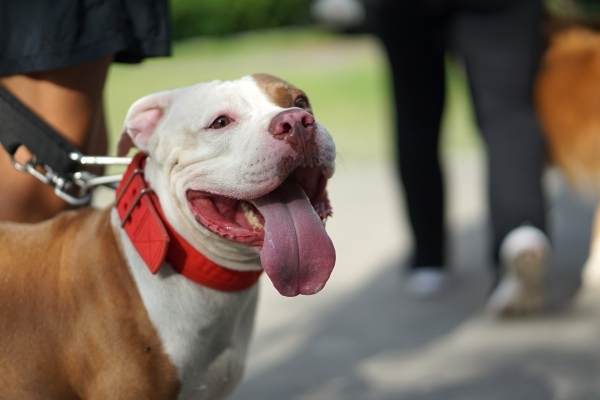
Cranial cruciate ligament rupture is one of the most common orthopedic injuries in dogs.
Some cases of CCL rupture occur acutely – from trauma such as a fall, stepping in a hole, hit-by-car, or other high-force injury to the stifle.
However, most CCL ruptures are caused by slow, gradual degeneration of the ligament. Rupture may be partial or complete. In many cases, it starts as a partial tear and progresses to a full rupture of the ligament over time.
Following the rupture of the cranial cruciate ligament, the stifle becomes unstable. When the dog or cat places weight on the limb, this instability allows the shin bone (tibia) to slide forward relative to the thigh bone (femur).
The stifle feels like it is “giving way,” causing pain and severe lameness. To avoid pain, the injured pet automatically shifts its weight to the “good” hind leg. This weight shift causes the other leg to do “double duty,” putting it at much greater risk of rupturing the other CCL.
Cranial cruciate ligament injuries are most likely in older, large breed, and overweight dogs.
The causes for CCL rupture are related to the age, breed, size, body condition, and activity of the pet, as well as its conformation. Obesity plays a large factor in CCL ruptures. While not nearly as common in cats, CCL tears are one of the most common problems veterinary surgeons fix in dogs.

Certain dog breeds are predisposed, such as:
- Labrador Retriever
- Pit Bull
- Rottweiler
- Newfoundland
- Staffordshire Terrier
- Mastiff
- Akita
- Bernard
- Chesapeake Bay Retriever
The injury is more common in spayed and neutered dogs, and is part of the reason veterinarians now recommend delaying spay or neuter surgery for large and giant breed dogs until the dog is 1-2 years of age.
Overweight pets are at higher risk for cruciate ligament injuries
Any dog or cat can tear its CCL ligament, but overweight pets are at significantly higher risk. Slimming to a healthy weight is a very important part of the prevention and healing process after a CCL rupture.
 Additionally, overweight pets will have more difficulty moving around while recovering from surgery, which can result in prolonged healing and pain.
Additionally, overweight pets will have more difficulty moving around while recovering from surgery, which can result in prolonged healing and pain.
A healthy weight and body condition reduces the stress on the injured joint, as well as stress on the other stifle’s ligaments.
Ideally, performing surgery to stabilize the injured stifle and address the excess weight can be done simultaneously, improving pets’ overall health and comfort, minimizing the development of severe arthritis, decreasing the risk of similar injury to the other hind leg, and getting them on the road to recovery as soon as possible. If your pet is overweight, our doctors would be happy to work with you develop a plan to help him/her slim down to a healthy weight.
How we diagnose CCL injuries
Typically, lameness is diagnosed with:
- A thorough medical history
- Complete physical exam and gait analysis
- Radiographs (X-rays)
- Lyme disease test
Often, when assessing a stifle injury, pets require a brief sedation to allow the doctor to manipulate the painful stifle. This manipulation is called the cranial drawer test and is used to assess for excessive joint laxity.
Radiographs are used to evaluate the stifle for signs of joint laxity, increased joint fluid, arthritis, and other potential – but much less common – disease processes that can cause similar lameness and pain, such as bone cancer.
A test for Lyme disease, which can cause lameness through joint inflammation, is also warranted.
A new diagnostic option: Orthopedic Ultrasound
An exciting new branch of ultrasound technology is gaining acceptance for smaller animals — orthopedic ultrasound. First used in equine medicine, it allows veterinarians to study injuries to muscles, ligaments, tendons and joints in a completely non-invasive and non-painful way. It’s particularly helpful when the cause of a lameness isn’t 100% obvious on physical exam.
Orthopedic ultrasound is more sensitive for soft tissue injuries than radiographs, which are better for evaluating bones. In addition, ultrasound costs less than MRIs and CAT scans and doesn’t require anesthesia. At worst, a patient may need light sedation to perform the ultrasound.
Ultrasound allows the doctor to “see” ligaments, tendons, muscles, and cartilage, guiding the recommended treatment plan. It can be used to determine if an ACL is completely torn, requiring surgery, or only partially damaged, which may heal with strict adherence to an 8-week rest and therapy plan. It can also be used to monitor the healing of a tendon or a ligament.
TREATMENT OPTIONS FOR REPAIRING TORN CCLs

Surgical Options – Most Common Choice
Tibial Plateau Leveling Osteotomy, or TPLO, is by far the most common cruciate surgical repair technique used in dogs. TPLO involves improving the biomechanics of the stifle by changing the angle of the top of the shin bone, called the tibial plateau.
In this technique, the top of the tibia is cut, rotated, and stabilized in place with surgical plates and screws. The change in the angle of the tibial plateau makes the stifle feel stable to the dog when weight-bearing, despite the ruptured ligament.
The success rate of TPLO surgery is high, with most dogs returning to normal or almost normal function. In one study, 98% of owners reported excellent, very good, or good outcomes. Because of the high degree of success, it has become the treatment of choice in large-breed and/or athletic dogs.
The most common complications with TPLO surgery include infection (approximately 6%) and implant loosening or failure.
Another surgical approach to CCL repair includes the Tibial Tuberosity Advancement (TTA). The TTA technique is sometimes used an alternative to TPLO in large dogs. It also aims to restore the biomechanics of the stifle.
Alternatively, two Extracapsular Surgical Repair Techniques aim to recreate the stifle-stabilizing function of the CCL by strengthening the tissues surrounding the stifle. These techniques are usually reserved for cats and medium-to-small dogs. While providing comfort, they are often not as effective in returning the stifle to full athletic function.
We now offer TPLO and other surgical cruciate repair procedures at Atlantic Veterinary Hospital
Board-certified veterinary surgeon, Dr. Eric Hoots, has partnered with us to provide TPLO and other surgical options for pets with cruciate ligament rupture at Atlantic Veterinary Hospital. Dr. Hoots has been providing specialty and advanced surgical care for pets since 2002. Pets are admitted and medically supervised by one of our doctors, who also manages the pet’s follow-up care.
Physical rehab therapy at Atlantic Veterinary Hospital

Dr. Tricia Munroe
Unlike 15 years ago, pets that undergo orthopedic surgery these days are no longer confined to crates during the recovery periods, but encouraged to exercise in a controlled and precise manner to increase their strength, maintain range-of-motion, and hasten healing.
Appropriate exercises can also improve pets’ comfort, help with weight loss, reduce scar tissue formation, and improve their quality-of-life — who doesn’t get achy and sad when forced to lie around?
A growing specialty, Certified Veterinary Rehab Therapy experts like our Dr. Tricia Munroe provide physical rehabilitation therapy in a specially-designed clinic setting similar to a physical therapist’s office for humans. Dr. Munroe, who is also certified in acupuncture, can develop and monitor a custom exercise and therapy plan to:
- increase strength in the injured limb or spine
- maintain joint range-of-motion
- promote weight loss and general well-being
- reduce pain and promote healing
Dr. Munroe uses a variety of treatment modalities, including specific exercises, stretching, acupuncture, and laser therapy. She also teaches pet owners how to help their pets exercise at home with precise exercises tailored to the pet.
What about cell therapy?
Stem cells are the basic cell precursors from which all other types of cells are generated. All specialized cells, such as muscle cells, nerve cells, blood cells, etc., originated from stem cells. Under the right conditions in the body or laboratory, stem cells can divide to self-renew and recreate new, functional tissue.

Stem Cell Therapy and other biological injections, such as Platelet Rich Plasma (PRP), have gained much attention in the last few years as potential alternatives to surgery and have created a flurry of research. These “cutting edge” therapies may eventually have the potential for several applications in both human and veterinary medicine. Researchers are developing techniques with the hopes of treating bone fractures, restoring diseased cartilage in arthritic joints, healing ligaments and tendons, and reversing type 1 diabetes.
Stem cell therapy and PRP are thought to promote the repair response in diseased, dysfunctional, or injured tissue. According to the Food & Drug Administration (FDA), “Stem cells have been called everything from cure-alls to miracle treatments.”
The techniques are still considered experimental. Most stem cell therapy, if using adult stem cells collected from the patient’s own body, is considered safe because it minimizes the risk of unwanted reaction. The most common side effects are temporary swelling and pain.
Is stem cell therapy truly effective? The jury is still out.
When used to help treat orthopedic disease, adult stem cells or platelets are harvested from the patient’s own body (typically from abdominal fat, blood, or bone marrow). The cells are processed in the lab, and then injected into the patient’s affected joint with the goal of decreasing inflammation and promoting healing.
Stem cell therapy or PRP may help a pet with a partially-torn CCL rebuild the ligament and make it stronger. If the CCL is completely ruptured or degenerated, stem cell therapy may be used to strengthen the other ligaments of the stifle.
Stem cell therapy and PRP are currently quite expensive.
We are still evaluating the science behind the variety of stem cell therapy and PRP treatment options available for dogs and cats, and will likely offer the therapy in the future when we are satisfied that the techniques are effective.
CONSERVATIVE NONSURGICAL OPTIONS
Conservative nonsurgical treatment options for complete CCL rupture are recommended less often by veterinarians because they have a lower success rate of returning a pet to normal function and a lower satisfaction rate amongst pet owners.

Conservative options may be considered an alternative when surgery is not an option; for example, when a pet also has significant heart disease, making anesthesia ill-advised.
Non-surgical options have historically included:
- cage rest
- extended exercise restriction (several months)
- appropriate pain medications
- cartilage protectant medications
- weight control
Non-surgical options have improved somewhat with advances in physical rehabilitation and recent improvements in custom leg braces used to support, protect, and align the injured limb.
Custom-made braces can be expensive and but may be helpful in small dogs if tolerated – some dogs will not. To be effective, the dog must wear the brace at all times. Lack of comfort and skin irritations, sometimes severe, are the most common concerns.
What happens if you don’t repair a torn CCL?
An untreated CCL tear can lead to a myriad of consequences and a cycle of pain, decreased mobility, and diminishing quality of life due to:
- Chronic pain caused by joint laxity and the development of arthritis. While pain medications tend to help and improve the limp, they do not fix the tear. As time goes by, pain may decrease to some degree, but it stills hurts, especially once arthritis sets in.
- Osteoarthritis, or inflammation in a joint. Arthritis is a life-long condition for which there is no cure. While anti-inflammatories and joint supplements may help, they don’t “fix” the arthritis and their effectiveness can decline over time. In addition, as pets age, they may develop liver and kidney problems that require us to curtail or forgo anti-inflammatory medication.
- Decreased range-of-motion in the stifle due to the development of scar tissue. Without surgery to stabilize the wobbly stifle, the body attempts to create stability with scar tissue. Unfortunately, this scar tissue is hardly ever strong enough to keep the stifle stable, leading to pain, arthritis, stiffness, and decreased range-of-motion.
- Muscle loss and weakness in the injured leg due to lack of use. Pets with an ACL tear move a lot less overall. And when they do move, they will shift their weight to the other three limbs and carry the injured limb. It’s the use-it-or-lose-it phenomenon. By decreasing their exercise, they lose muscle all over, putting other joints at risk because of the loss of joint-stabilizing muscles. The injured limb will have the post pronounced muscle atrophy.
- Changes in gait and posture that negatively affect the other three limbs and spine.
- ACL tear in the other leg. When the ACL tears in one stifle, pets will shift their weight to the other hind leg, often leading to an ACL tear in the opposite leg.
- Weight gain due to inactivity. Pets with chronic lameness become inactive couch potatoes, losing muscle, and frequently gaining weight. The added weight puts more pressure on the joints, leading to more pain and more of the consequences above.
- Meniscal tears. Meniscus are an important cartilage cushion in the stifle. Left untreated, up to half of dogs with ACL tears will end up with a torn meniscus, causing more pain and more of the consequences above.
